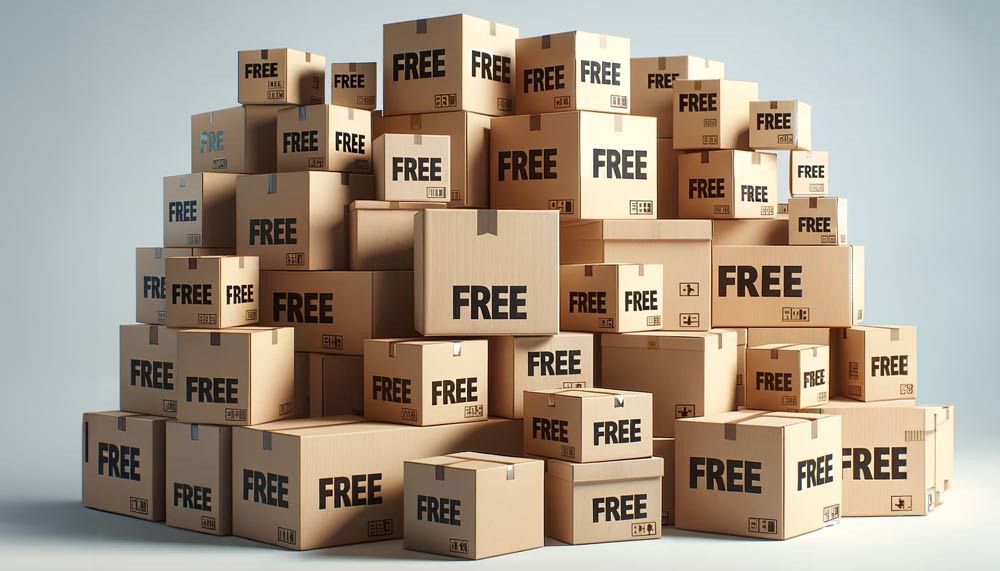So, you’ve decided to move. Congratulations! If you’re moving across the country or just across town, you’ll have a lot to do before settling into your new place. The important part is choosing the right moving company. A professional moving company will go over all the items in your home room by room.
Together, you will create an inventory of items. We recommend you get quotes from at least three different moving companies. Moving expenses can add up quickly. Comparing rates is important.
In addition to the move itself, there are other costs to consider, such as renting a moving truck, moving supplies, hiring professional packers and movers, and purchasing insurance for your belongings.
These costs can vary; it all depends if it’s a long-distance move or a local move and the services you require. Once you’ve chosen your moving company, it’s time to start packing. Moving can be daunting, but you can get it done quickly and efficiently with a bit of planning.

What You Need To Know About Packing
Packing can be daunting, especially if you’re unsure where to start. But don’t worry, we’re here to help. Follow our ultimate moving checklist, and you’ll be ready to move in no time.
Start early: The earlier you start to pack, the better. It will give you plenty of time to go over your belongings, and decide what items you want to keep, sell, and donate. It will also help reduce the stress of packing closer to your move date. If you find you have furniture you would like to sell, we suggest using the Facebook Marketplace app. It’s an excellent way to get rid of stuff you won’t need and make money. You can also find free moving boxes on the Facebook marketplace. If you have bulky items and have no use for them anymore, we recommend calling a junk removal company. They will gladly come out to you for free.
Make a plan
Before you start packing, it’s crucial to have a plan. That includes creating a packing schedule and deciding what packing materials you’ll need. You will need moving boxes, a wardrobe box, and packing tape. Small boxes are great for fragile items. Wrap them up with bubble wrap or paper towels. You can also use packing peanuts for delicate articles. A wardrobe box is perfect for hanging clothes. They come with a bar that you can hang your clothes on. It can save you time when unpacking.
Create a packing schedule
A packing schedule will help you stay organized and on track. Decide which room you want to pack first and work your way down the list. Make sure you have a detailed labeling system for your boxes. It will help you stay organized to know where everything is when you start unpacking.
How To Pack Your Room.
Packing a room at a time can help keep the process organized and less overwhelming. Once you’ve finished packing a room, close the door and move on to the next room. Make sure not to leave empty space when packing moving boxes. You can use your stuffed animals if you have any or packing peanuts to fill the space.
Hire Professional Movers in San Jose
We recommend hiring professional movers and packers if you’re moving to Los Angeles. They will be able to properly pack and ship your belongings, so they arrive safely at your new home, and they will be able to do all the heavy lifting for your bulky items.

In addition, some local moving companies in San Jose offer storage solutions if you need to store some of your belongings while you’re getting settled in a home. The moving process doesn’t have to be a stressful one. With a little planning and organization skills, you can get it done quickly and efficiently.
Best Packing Tips for Moving
Start by packing non-essential items first, such as out-of-season clothes, books, and knick-knacks. Doing this might help lighten the load and make packing the rest of your belongings much more manageable. Use recycled materials such as newspapers and bubble wrap to pack your fragile items.
It will help save you money on packing supplies. Don’t forget to label all your fragile boxes so they are handled accordingly. Only the essentials should be sealed and taken with you for safekeeping. It can include your items such as medications, a change of clothes, important documents, and your electronics.
Hiring Professionals for Your Long-Distance Move
Moving budget is often one of the most critical concerns when planning long-distance moves. Hiring professional movers will help save you time and money in the long run. The packing process will be more efficient, and they will have the proper equipment to move your belongings safely to your new house.
In addition, a long-distance moving company will sometimes offer storage options in case you need to store some of your belongings. A professional moving company usually offers the first month free. You can ask the moving company if they do when getting a quote.
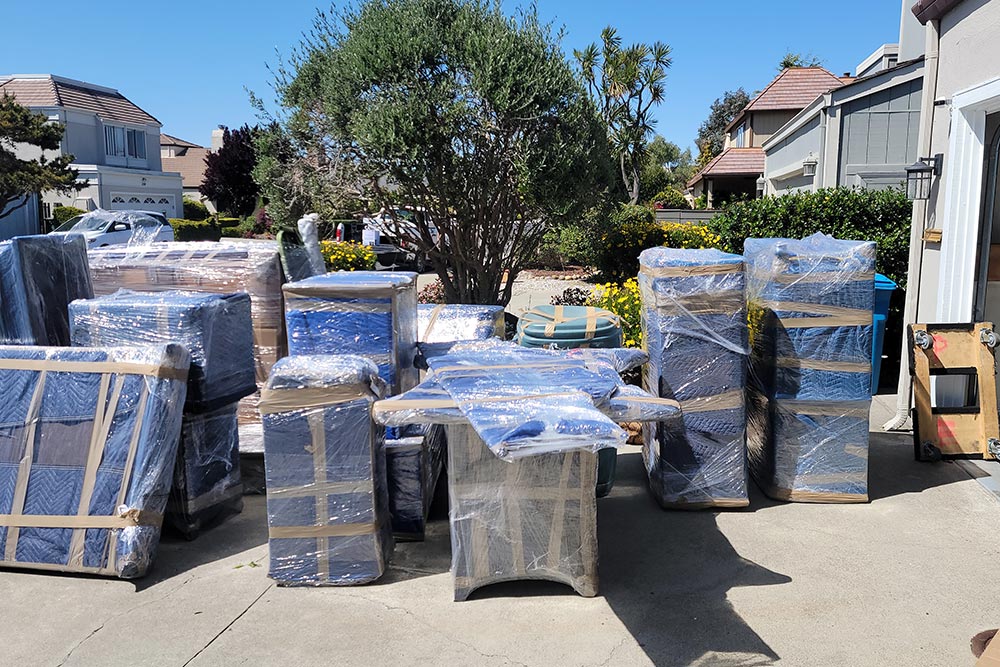
Options for Intrastate Moves
When it comes to intrastate moves, you have a few different options. You can drive your belongings to your new home, or you may have them shipped with movers in San Jose, CA. If you’re going to drive, we recommend renting a moving truck. You can hire San Jose professional movers so they can do all your packing.
Our local movers will bring all the packing supplies needed, including packing tape, moving boxes, and packing materials. It will make your packing process a bit easier and stress-free. Packing for a long-distance move can be daunting, but it can be easy with a bit of planning and organization. Just make sure to start early, so you can give yourself enough time to get everything done.
Packing Services
Many professional packing services can help make your move easier. These services will pack and ship your belongings for you, so you don’t have to worry about it. They will also provide you with the proper materials and moving supplies needed for your move. A packing service can be an excellent option for those moving long-distance or who have a lot of belongings to pack.
Moving budget is often an essential concern when planning long-distance moves. Hiring professional movers will ultimately help save you time and money in the long run.

How To Pack Your Furniture
The first step would be to disassemble all your furniture, including removing any detachable legs, arms, or shelves. Once everything is disassembled, plastic wrap each piece individually in furniture pads or bubble wrap. It will help protect your furniture from scratches and dents during the move.
Dining table leaves can be wrapped with plastic wrap and stored in moving boxes or wrapped in packing paper to prevent them from getting lost. Dresser drawers need to be emptied, but be sure to secure them shut with packing tape to prevent opening during the move.
Packing Tips For Heavy Furniture
Heavy furniture such as a dining room table, pool table, or a grand piano will need to be professionally crated to be transported safely. Make sure you get a moving estimate from the moving company near you on how much it will cost to hard crate your heavy furniture. After your furniture is disassembled and wrapped, you’ll need to pack it into the moving truck.
The heaviest pieces of furniture, such as couches and dressers, should be loaded first and placed against the wall of the moving truck. Lighter items such as chairs and end tables can be placed on top of the heavier pieces. Be sure to secure all your furniture with straps or rope, so it doesn’t shift during the drive.
Packing Tips for Appliances
Appliances such as refrigerators, washers, and dryers need to be prepared before they can be moved. Be sure to clean your appliances and defrost your refrigerator at least 24 hours before the move date. This will help prevent any leaks or damage during transport. To properly pack your appliances, you will need to disconnect and drain them.
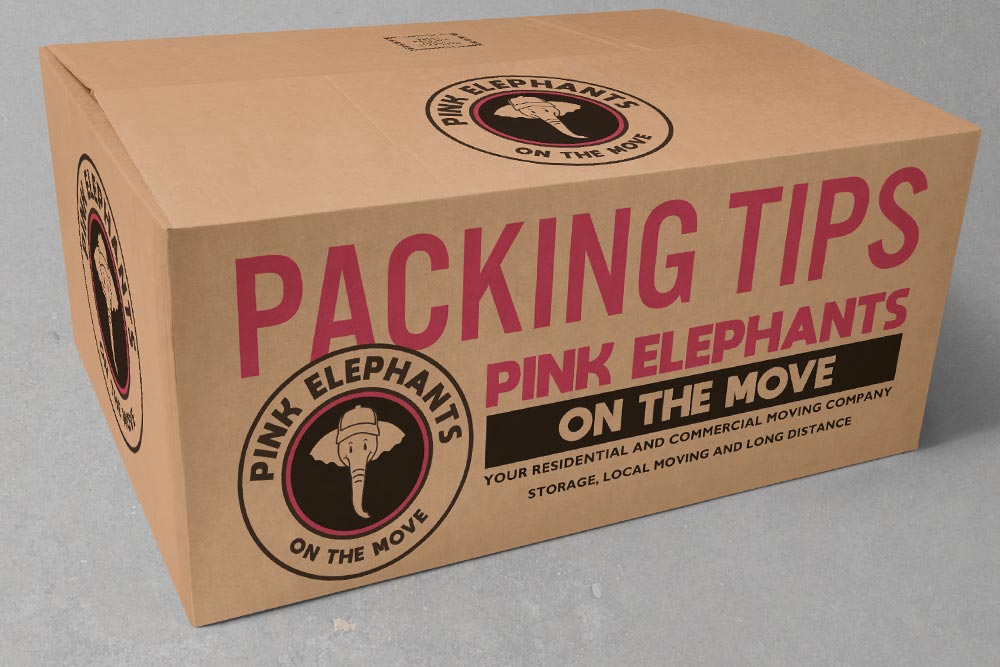
Pack the Electrical Cords Together
Be sure to keep all the cords and hoses together, so you don’t lose them. Once disconnected, wrap each appliance in bubble wrap, furniture pads, or blankets to prevent damage during the move. Appliances can be quite heavy, so be sure to have someone help you lift and load them into the moving truck. Be sure to secure them in place, so they don’t shift during transport.
Packing Tips For Delicate Items
Delicate items such as dishes, glassware, and fragile electronics need to be packed carefully to prevent them from breaking during the move. Make sure to wrap each item with individually packing paper or bubble wrap. You can also use dish towels or blankets for extra padding. Place these items in moving boxes and fill any space with bubble wrap or crumpled-up paper. Be sure to label these boxes fragile, so they are handled with care.
Box Options For Moving And Packing
There are many different types of boxes you can use for your move. The most common type of box is the standard moving box which is typically used for packing clothes, linens, and small household items. These boxes come in various sizes, large boxes, medium boxes, or small boxes. Be sure to get the right size for your belongings.

Using Wardrobe Boxes For Your Clothing
If you have a lot of clothes, you may want to use wardrobe-type boxes. These boxes are taller than standard moving boxes and have a rod inside for hanging your clothes. It’s one option for those who don’t want to fold their clothes. Furthermore, you can store shoes on the bottom of the box. Another way to optimize the space in the box is to keep your decorative pillows or bedroom pillows. The two most common boxes are Laydown boxes measuring 36″ x 21 x 10″ or Shorty Boxes measuring 24″ x 20″ x 34″.
San Jose Movers Love Using Dish Pack Boxes!
Another option is the dish pack box which is specifically designed for packing dishes and glassware. These boxes are sturdier than standard moving boxes and have dividers to keep your belongings from shifting during the move.
Wardrobe boxes are also a good option for moving clothes and other items that need to be hung up. These boxes come with a bar on which you can hang your clothes. Garbage bags are not recommended for moving as they are not sturdy enough and can tear easily.

Moving Boxes by Size and Dimensions
- Small box- 16″x12″x12
- Medium box – 18″x18″x16″
- Large box – 18″x18″x24″
- Extra large box – 24″x18″x24″
- Dish pack box – 18″ x 18″ x 28″
- Picture/ Mirror box – 37″ x 4″ x 27″
- Lamp box – 12″ x 12″ x 40″
- Wardrobe box – 18″ x 21″ x 46″
How To Pack A Mattress
Mattresses can be difficult and heavy item to move because it is so large and bulky. To make moving your mattress easier, you can fold it in half or roll it up. Be sure to wrap it in furniture pads or blankets to prevent it from getting damaged. Once you have wrapped your mattress, you will need to secure it with rope. Or you can ask the moving company to supply you with a mattress cover. During the moving process, a professional will place your mattress.
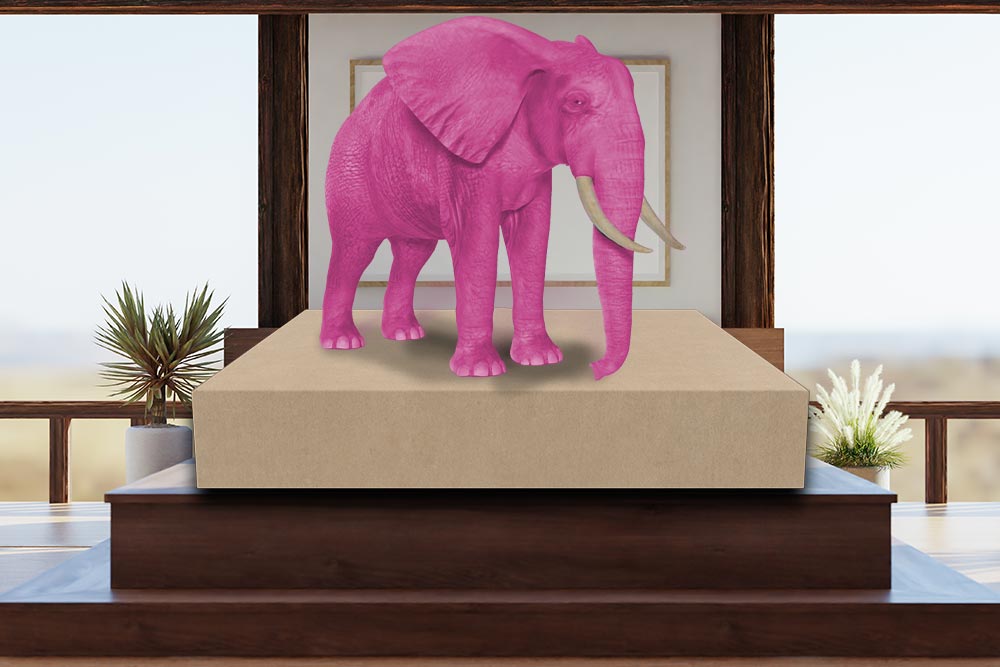
Packing Tips For Clothes
Clothes can be packed in either suitcases or moving boxes. But the best way to pack your t-shirts and clothes is using a box specifically made for your wardrobe. Be sure to choose the right size packing box, so your clothes don’t get wrinkled. You can pack your clothes in garbage bags, but be aware they are not as sturdy as moving boxes.
Packing Tips For Dishes
Dishes need to be packed very carefully to prevent them from breaking during the move. Be sure to pack dishes individually in packing paper or bubble wrap. You can also use dish towels or blankets for extra padding. Place these items in moving boxes and fill any empty spaces with packing paper or crumpled-up paper. Be sure to label these boxes “fragile” so they are handled with care. Pack glasses and cups upside down in boxes lined with packing paper.
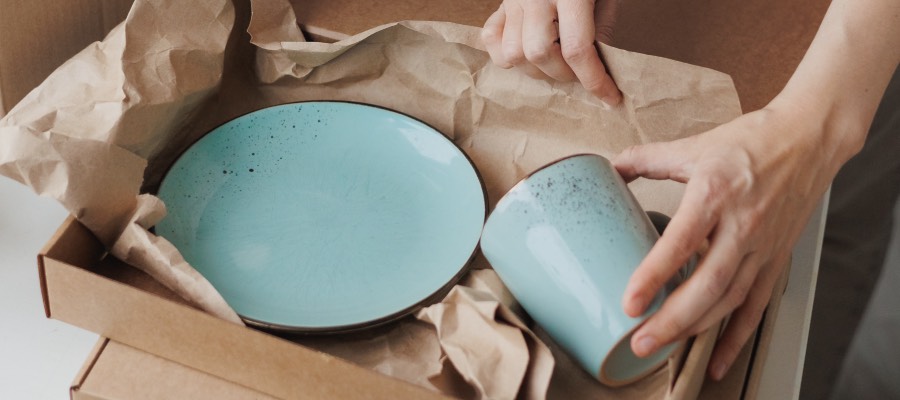
Moving Tips and Tricks
- Get free boxes from local stores or post on social media sites like Facebook Marketplace or Craigslist.
- Pack a box with essential items you may need during the first few days in your new home, such as toilet paper, towels, and a change of clothes.
- Use clear plastic bins to pack smaller items such as cooking utensils, plastic utensils, paper plates, and trash bags.
- Use old pillows, blankets, or towels to cushion your belongings and prevent them from shifting during the move.
- Be sure to label all your boxes with their contents and the room they belong in. This will make unpacking a breeze.
- Pack decorations and knick-knacks last.
Cardboard boxes are a very common type of packing material used when moving. Large garbage bags can be used for clothes or other items, but they are not as sturdy as cardboard boxes and can tear easily. Be sure to get the right moving boxes for your belongings.
Moving and packing can be a daunting task, but with a little planning and these helpful moving tips, it can be a breeze. Be sure to get the right size moving boxes and pack your belongings carefully to prevent them from breaking during the move.
Using Bubble Wrap When Packing For Your Move
When packing dishes, use bubble wrap to keep them from breaking. Place the bubble wrap on a flat area and place the dish in the center. Wrap the dish in bubble wrap, making sure to cover all sides. Secure the bubble wrap with tape and put it in a moving box. Fill any open spaces in the box with butcher paper or crumpled-up paper to prevent the dishes from shifting. Label the box “fragile” so it is handled with care.

Moving Checklist
- 4-6 weeks before the move:
- Research moving companies and get quotes.
- Make sure you have all the moving supplies you’ll need.
- Schedule a time for the movers to come and pack up your belongings.
- Notify your landlord or homeowners association of your upcoming move.
- Don’t forget to cancel before your move if you have a home security system.
Prepare For Your Move-in day!
Move-in day can be hectic, so it’s essential to be prepared. Make sure you have all your confidential items with you. Have the necessary paperwork and documents ready to go. A few things you’ll need are a copy of your lease or rental agreement and your driver’s license or a photo ID. Be sure to have cash with you to tip the local movers and any unexpected expenses that might come up.
Gather Moving Supplies
All those boxes will be unpacked in no time. Gather moving supplies and keep them handy if you need them for future use. The next few weeks after the move will be unpacking and settling into the new home. Be sure to take some time off and relax during the moving process. After all, you’ve earned it!

What People in San Jose Also Ask
In what order should I start packing for a move?
It’s always best to begin packing for a move as soon as possible. That way, you can take your time and pack things up gradually instead of trying to do everything at the last minute. Begin by packing items you won’t need daily, such as out-of-season clothes, knick-knacks, and non-essentials. Once you’ve packed the easy stuff, you can move on to packing up your kitchen, bathroom, and bedroom.
How many weeks before moving should you start packing?
The answer depends on a few crucial factors, such as the size of your home, the amount of stuff you have, and how much help you have.
If you’re moving from a small apartment by yourself, you might be able to get away with starting to pack a few weeks in advance. But if you’re moving a larger home with a family, you might need to start packing months in advance.

Here are some general guidelines to follow:
- If you’re moving a one-bedroom apartment by yourself, start to pack two to three weeks in advance.
- If you’re moving a two-bedroom home with a partner or family, begin packing four to six weeks in advance.
- If you’re moving a three-bedroom house with a family, start to pack six to eight weeks in advance.
- If you need to pack up a four-bedroom or larger home, begin packing eight to twelve weeks in advance.
What are four things you should do before you move in?
- Set a realistic budget
- Research your new neighborhood
- Get to know your neighbors
- Make sure you have the essentials
What not to pack when moving
There are some items you shouldn’t pack when moving. These include:
- Perishable food
- Plants
- Pets
- Hazardous materials
- Valuables
- Fragile items

**Perishable food** such as fruits, vegetables, meat, and dairy products should be eaten before the move or given away. **Plants** need to be appropriately cared for during a move and may not survive the trip, so it’s best to leave them behind. Your valuables should be stored in a **safe place**, such as a safety deposit box, and not packed in with your belongings. And finally, **fragile items** such as dishes, glassware, and electronics should be packed with extra care to prevent breaking.
What Is The First Thing You Can Do When Moving Into Your New Home
The first thing you should do when moving into your new home is take a deep breath and relax. It is a big accomplishment, and you deserve to pat yourself on the back (and maybe even treat yourself to a celebratory dinner out). Once you’ve taken a moment to celebrate, it’s time to start unpacking and settling into your new home.
Personal items, such as photos and mementos, should be unpacked first. It will help you feel more at home in your new space. Next, focus on unpacking the essentials, such as clothes, toiletries, and bedding. Once you have the basics squared away, you can start to unpack the rest of your belongings and make yourself a new home.
A Few Items You’ll Need For Your New Home In Your First Few Days :
- Toilet paper
- Trash bags
- Cleaning supplies
- Pots and pans
- Dishes and silverware
- Bed sheets and towels
- Clothes hangers
- First-aid kit
- Welcome mat
I hope these tips helped get you started on packing for your move. Remember, the earlier you start, the better. Don’t forget to enjoy this journey – after all, a new home is an exciting adventure. Safe travels!










